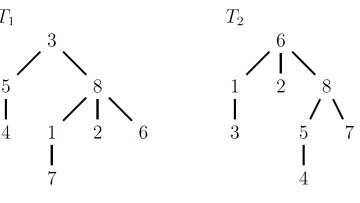Unramified geometric class field theory
Abstract
Roughly speaking, class field theory for a number field K describes the abelianization of its absolute Galois group in terms of the idele class group of K. Geometric class field theory is what we get when K is instead the function field of a smooth projective geometrically connected curve X over a finite field. In this talk, I give a precise statement of geometric class field theory in the unramified case and describe how one can prove it by showing the Picard stack of X is the “free dualizable commutative group stack on X”. A key part is to show that the usual “divisor class group exact sequence“ can be done in families to give the adelic uniformization of the Picard stack by the moduli space of Cartier divisors on X.
The spherical Hecke algebra of GL(n,F)
Abstract
The Hecke algebra is an algebraic gadget for studying the smooth complex representations of locally profinite groups. We demonstrate the spherical Hecke algebra of GL(n,F) is commutative and present a combinatorial proof of the Satake isomorphism. We apply this to the classification of spherical representations of GL(2,F).
So famous you've never heard of them, Fanny were one of the first all-female rock bands. This track is a cover of a Beatles song (who you probably have heard of). It is from an episode of Beat Club, the legendary German sixties and seventies music programme. It has a treasure trove of performances from the period.
The delivery of this year’s Mathematics Admissions Test (MAT) has caused widespread distress and difficulties, most especially for the candidates themselves. The Oxford Mathematical Institute would like to apologise for this distress, and assure everyone that our priority is to ensure that no one is disadvantaged during the admissions process. We would also like to thank everyone who has provided feedback so far, whether via the special consideration forms or via email and social media.
Oxford Mathematics and Balliol College will be hosting an afternoon to celebrate the life and contributions of Vicky Neale who died in May of this year.
November 11, 2023, 14.00–16.30
Mathematical Institute, University of Oxford, Woodstock Road, OX2 6GG
If you would like to join us, please register here
You can leave your memories of Vicky here.
18:00
Frontiers in Quantitative Finance: Large Language Models for Quantitative Finance
Abstract
This event is free but requires prior registration. To register, please click here.
Abstract
In the contemporary AI landscape, Large Language Models (LLMs) stand out as game-changers. They redefine not only how we interact with computers via natural language but also how we identify and extract insights from vast, complex datasets. This presentation delves into the nuances of training and customizing LLMs, with a focus on their applications to quantitative finance.
About the speaker
Ioana Boier is a senior principal solutions architect at Nvidia. Her background is in Quantitative Finance and Computer Science. Prior to joining Nvidia, she was the Head of Quantitative Portfolio Solutions at Alphadyne Asset Management, and led research teams at Citadel LLC, BNP Paribas, and IBM T.J. Watson Research. She has a Ph.D. in Computer Science from Purdue University and is the author of over 30 peer-reviewed publications, 15 patents, and the winner of several awards for applied research delivered into products.
View her LinkedIn page
Frontiers in Quantitative Finance is brought to you by the Oxford Mathematical and Computational Finance Group and sponsored by CitiGroup and Mosaic SmartData.
15:00
A gentle introduction to Ricci flow
Abstract
Richard Hamilton introduced the Ricci flow as a way to study the Poincaré conjecture, which says that every simply connected, compact three-manifold is homeomorphic to the three-sphere. In this talk, we will introduce the Ricci flow in a way that is accessible to anyone with basic knowledge of Riemannian geometry. We will give some examples, discuss finite time singularities, and give an application to a theorem of Hamilton which says that every compact Riemannian 3-manifold with positive Ricci curvature admits a metric of constant positive sectional curvature.



